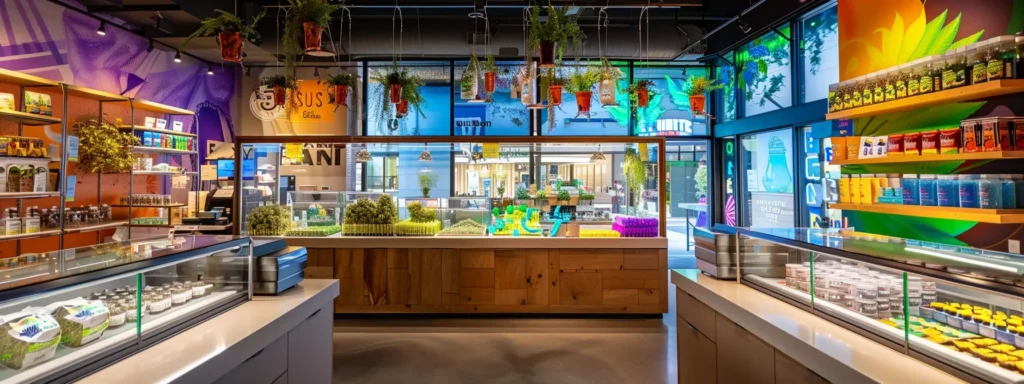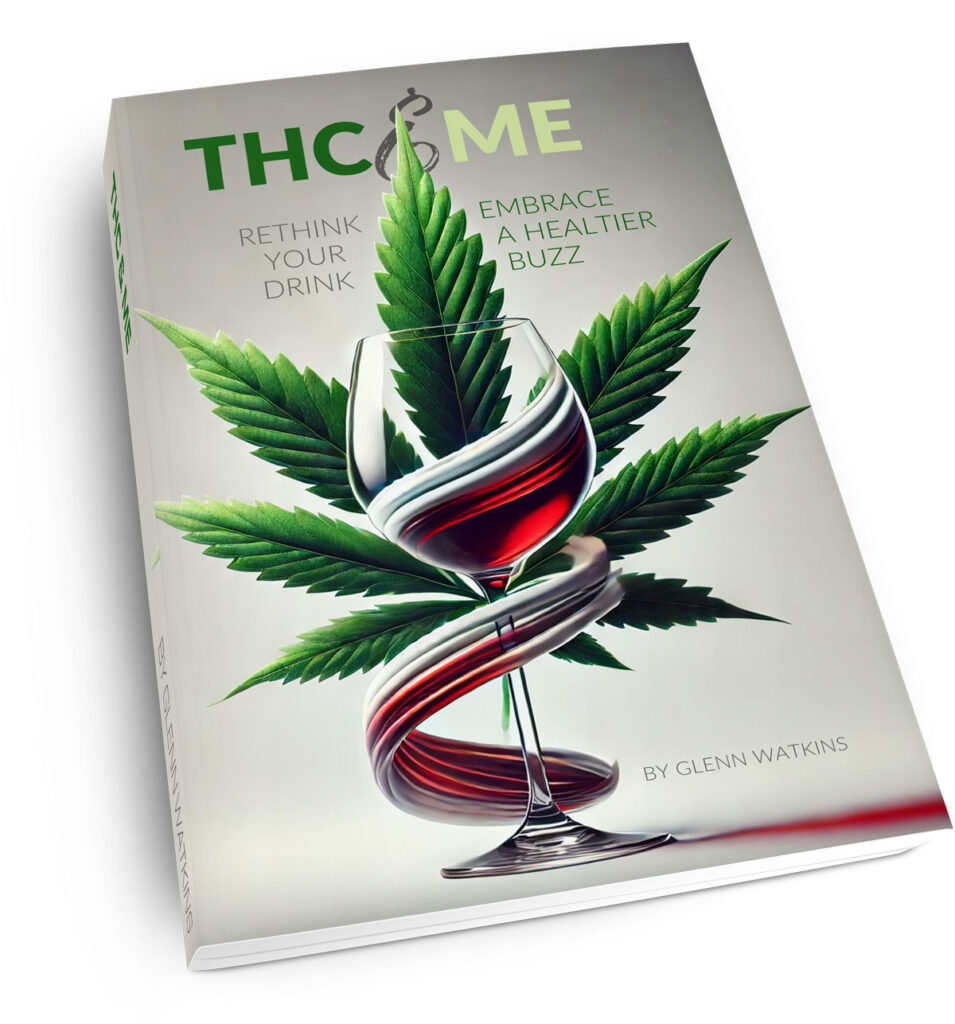
Factors Influencing THCA Pricing in Flower and Concentrate Products
Have you ever wondered why THCA pricing varies in flower and concentrate products? This post explains key factors such as production costs, market supply and demand, and quality considerations. Readers will learn how legal regulations and competitive trends shape THCA prices. By understanding these elements, anyone can make informed decisions when purchasing marijuana products.
Key Takeaways
- thca pricing reflects product characteristics like oil content and extraction methods
- extraction techniques impact cost and quality consistency of thca concentrates
- packaging and distribution costs shape overall thca pricing
- consumer feedback drives adjustments in thca flower and concentrate pricing
- regulatory and compliance costs affect market prices for thca products
Understanding THCA and Its Market Value

THCA offers unique characteristics that shape its pricing across flower and concentrate products. Key specifics include its oil content, taste profile, rosin extraction, and wax forms, with demand varying by drug classifications and usage. This section outlines these elements and discusses how market interest influences THCA pricing.
Key Characteristics of THCA and Its Pricing
The unique elements of THCA, such as its oil content and extraction forms, play a significant role in determining its market value. A deeper understanding of these characteristics helps customers make informed decisions, as seen with products like delta-10, where factors like taste and extraction methods contribute to overall user experience.
Market interest in THCA is shaped by its varying profiles in both flower and concentrate products. This approach to pricing offers practical insights for every customer, as vendors often seek feedback through methods such as collecting an email address for updates, ensuring that every aspect of understanding directly benefits the end user.
The Demand Dynamics of THCA Products
The market interest in THCA products shows clear trends influenced by consumer experiences and regulatory concerns, including drug test outcomes. THCA pricing adjusts based on product purity, extraction methods, and factors related to concentration, as seen in tests measuring components like crystal and soil residues, ensuring consistent quality and user satisfaction.
Interest in THCA stems from its varied profiles, where factors such as seed-based cultivation and unique extraction techniques resemble the care taken in producing items like peanut butter. Vendors collect practical feedback to guarantee that product details, including taste and extraction methods, align with customer expectations and meet reliability standards for everyday use.
Production Costs Impacting Pricing

Evaluating cultivation expenses for THCA flower, extraction costs for concentrates, and packaging plus distribution expenses follows strict law and food and drug administration standards. Factors like trichome quality and sugar testing influence statistics and guide practical pricing calculations for targeted products.
Analyzing Cultivation Expenses for THCA Flower
The expenses related to cultivation for THCA flower involve careful research and monitoring of market trend patterns that affect production costs. Experts note that understanding the behavior of crop growth in different climates plays a critical role, with consistent demand supporting advancements in cultivation methods that sometimes reveal findings on neuroprotection benefits.
Precision in handling cultivation expenses requires rigorous research and practical insights from experienced growers. Observations on market trend shifts and consumer behavior contribute to determining optimal production techniques while ensuring that the focus remains on maintaining quality and reinforcing scientific research on neuroprotection.
Extraction Costs for THCA Concentrates
The process of extracting THCA concentrates involves strict protocols that ensure regulatory compliance and consistent purity per gram requirements, making cost considerations critical:
- Extraction equipment efficiency
- Use of approved solvents and techniques
- Regular testing to avoid disease contamination
- Consumer preference for high-quality concentrates
- Industry trends shifting focus and rethinking THC extraction methods
The cost analysis for extraction procedures reflects a careful balance between meeting regulatory demands and addressing market preferences. Experts note that optimizing processes helps mitigate potential issues such as disease risks while ensuring every gram meets quality standards and contributes to rethinking THC production practices.
Packaging and Distribution Expenses
The cost of packaging influences THCA pricing significantly, affecting how hash oil, acid, and cream products preserve their quality during transit. Strict control of humidity levels during packaging ensures product integrity and reduces waste:
| Factor | Impact on Pricing |
|---|---|
| Packaging Materials | Determines protection and longevity |
| Humidity Control | Maintains product consistency and quality |
| Handling Techniques | Directly influences overall production costs |
Distribution expenses also affect the market cost of THCA products, with transport requirements for products like hash oil and cream being carefully monitored. Expert assessments confirm that packaging standards and controlled environments lower financial risks while reinforcing quality in competitive product categories.
Market Supply and Demand Influences

Current supply levels of THCA products and hybrid variants outline a dynamic landscape. Consumer dose preferences and online shopping habits drive changes in supply and demand, while seasonal variations affect overall product availability. Each factor offers practical insights into pricing and availability for both flower and concentrate formulations.
Examining Current Supply Levels of THCA Products
The current supply levels of THCA products vary based on production capacity and seasonal dynamics. Market observers note that consumer focus on benefits like reduced inflammation, improved efficacy, and support for the endocannabinoid system underscores the influence of supply on overall product perception and the management of nausea.
Up-to-date supply data supports decision making by providing insights into production consistency and market adjustments that ensure customer satisfaction. Supply factors encompass changes in agricultural practices, regulatory shifts, and evolving consumer feedback, which include influences such as inflammation relief and enhanced efficacy in mitigating nausea:
- Agricultural improvements and production consistency
- Regulatory adjustments affecting product distribution
- Consumer feedback on endocannabinoid system support
- Assessment of product perception regarding inflammation and nausea management
The Role of Consumer Demand in Pricing
The consumer demand plays a central role in structuring the price of THCA products, with each sale reflecting a refined methodology that balances market trends and regional jurisdiction. Market analysts observe that shifts in agriculture practices and consumer needs directly impact pricing, making the role of consumer feedback critical in shaping the product portfolio.
Experts emphasize that consumer interest and feedback drive rapid adjustments in pricing strategies, while practical examples in agriculture illustrate the effect of varying market jurisdictions on price. Key factors in this dynamic include aspects such as monitoring production methods, tracking consumer trends, and adjusting regulation impacts in real time:
- Methodology improvements in testing and extraction
- Agriculture modifications that influence crop yield
- Shifts in jurisdiction that alter regulatory demands
- Consumer feedback guiding product enhancements
- Price adjustments in response to market shifts
Seasonal Variations in THCA Availability
Seasonal changes affect tetrahydrocannabinolic acid availability, influencing both production strategies and pricing in regions like indiana; this knowledge helps producers address pain points while supporting sustainability efforts in flower and concentrate products:
- Variations in climate impacting crop yield
- Adjustments in cultivation practices for sustained product quality
- Shifts in consumer demand during different seasons
Market observers note that these seasonal shifts allow experts to optimize extraction processes and mitigate pain for consumers seeking reliable products, reinforcing a commitment to sustainability in every phase of production.
Quality and Purity Considerations

Potency in THCA products guides pricing, with lab tests ensuring accurate tetrahydrocannabinol levels and terpene profiles. Each harvest undergoes rigorous checks, and cooking techniques help refine concentrate quality. These practices, common in areas like illinois, offer practical insights into how quality and purity considerations affect overall pricing.
How Potency Affects THCA Product Pricing
The potency of THCA products directly affects pricing by reflecting the rigorous quality assurance processes involved. The consistent application of tests for factors such as citrus flavor profiles and contamination levels ensures that each batch meets user expectations, including comparisons with delta-8 alternatives known for promoting relaxation.
Market experts emphasize that higher potency often translates to increased production costs and improved quality measures that protect against contamination:
| Factor | Impact on Pricing |
|---|---|
| Potency Level | Correlates with enhanced quality assurance |
| Extraction Precision | Prevents contamination and maintains citrus notes |
| Comparative Standards | Influences relaxation benefits similar to delta-8 |
The Importance of Lab Testing on Price Variability
Laboratory evaluations play a crucial role in establishing decarboxylation standards and maintaining quality control, which in turn supports a reputable brand image. These tests aid in guiding consumer education by providing clear data on product potency and consistency, reducing price variability in the market.
Strict lab protocols ensure that aspects such as a lemon flavor profile and decarboxylation levels meet quality control benchmarks, thereby sustaining accurate pricing for THCA products. This approach assists in building consumer education and trust by delivering consistent results that validate the brand’s commitment to excellence.
Legal and Regulatory Factors

The text explains compliance costs affecting pricing strategies and the impact of state regulations on THCA pricing. It outlines how innovation, potency, weight, and genetics shape pricing approaches in both flower and concentrate products, offering a framework for understanding regulatory compliance and market adaptation. This introduction leads into detailed practical insights in subsequent sections.
Compliance Costs Affecting Pricing Strategies
The analysis of compliance expenses reveals significant factors affecting THCA pricing in flower and concentrate products. Regulatory requirements mean that extra costs are incurred in testing tincture, processing resin extractions, monitoring leaf quality, consulting the HHC guide, and ensuring proper sunlight exposure during cultivation:
- Increased testing and certification fees for tincture formulations
- Enhanced quality controls for resin extractions and leaf products
- Regular use of guidelines such as the HHC guide for consistent processing
- Monitoring of sunlight exposure to ensure optimal plant growth
Market experts emphasize that understanding the detailed compliance costs is essential for accurate pricing strategies. They note that practical examples from the production process help clarify how these expenses translate into final product costs and influence consumer value.
Impact of State Regulations on THCA Pricing
The state regulations affect THCA pricing by establishing safety and quality standards that vendors must follow when producing a bud for consumption. The guidelines in the thca guide help ensure that every product meets rigorous criteria similar to the consistency found in a well-cultivated berry.
Policy variations across states lead to adjustments in production costs, which subsequently influence the pricing of THCA concentrates and flower products for consumption:
| Regulation Aspect | Impact on Pricing |
|---|---|
| Safety Standards | Ensures product reliability and consumer trust |
| thca guide Compliance | Drives production costs and market pricing |
| Consumption Guidelines | Influences market demand and bud quality |
| Quality Verification | Aligns pricing with standards akin to a berry’s consistency |
Competitive Landscape and Market Trends

This section reviews pricing strategies among leading THCA producers, examines trends in consumer preferences affecting retail and cannabinoid costs, and highlights innovations driving changes in pricing models. The analysis includes factors such as heat management, policy impacts, and regulation adjustments, offering practical insights for market stakeholders.
Pricing Strategies Among Top THCA Producers
Top THCA producers use targeted pricing strategies that reflect the nuances of both flower and concentrate products. Experts in the field apply a combination of market research and consumer feedback to set competitive prices, ensuring that products meet high standards of quality and cost efficiency while addressing specific customer requirements.
Industry leaders monitor emerging market trends and adjust their pricing models to stay ahead of regulatory and consumer demands. This practical approach allows them to optimize production expenses and maintain reliability in product performance, ultimately supporting a robust competitive landscape in the THCA market.
Trends in Consumer Preferences and Their Effect on Pricing
The analysis shows that evolving consumer interests drive adjustments in THCA pricing for both flower and concentrate items. Market actors note that preferences for higher purity and refined extraction methods lead to pricing models that adapt to these trends.
Market experts observe that customer feedback and purchasing patterns strongly influence pricing strategies, ensuring products consistently meet consumer expectations and quality benchmarks:
| Consumer Insight | Pricing Impact |
|---|---|
| Preference for higher purity | Price increase for premium products |
| Demand for refined extraction | Increased cost for advanced techniques |
| Feedback on product consistency | Stable pricing for reliable quality |
Innovations Driving Changes in THCA Pricing Models
Innovations in extraction techniques and laboratory testing have transformed THCA pricing models for flower and concentrate products. These improvements streamline production and improve consistency, ensuring that end users receive practical benefits such as refined quality and effective cost management. Market experts note that embracing advanced technology yields tangible benefits that resonate with consumer needs.
Cutting-edge research and process optimization drive shifts in how vendors determine THCA product prices. Techniques that improve precision in measuring potency and maintaining purity offer clear, actionable insights, resulting in more stable pricing structures. Industry professionals emphasize that these progressive methods contribute significantly to consumer confidence and overall market advances.
Conclusion
THCA pricing for flower and concentrate products relies on various factors, including unique chemical profiles and extraction processes. Production costs, from cultivation to packaging, directly shape market pricing structures. Consumer feedback, regulatory frameworks, and seasonal shifts further influence price adjustments. This analysis highlights the practical implications for vendors and buyers seeking consistent quality and informed decision making.

